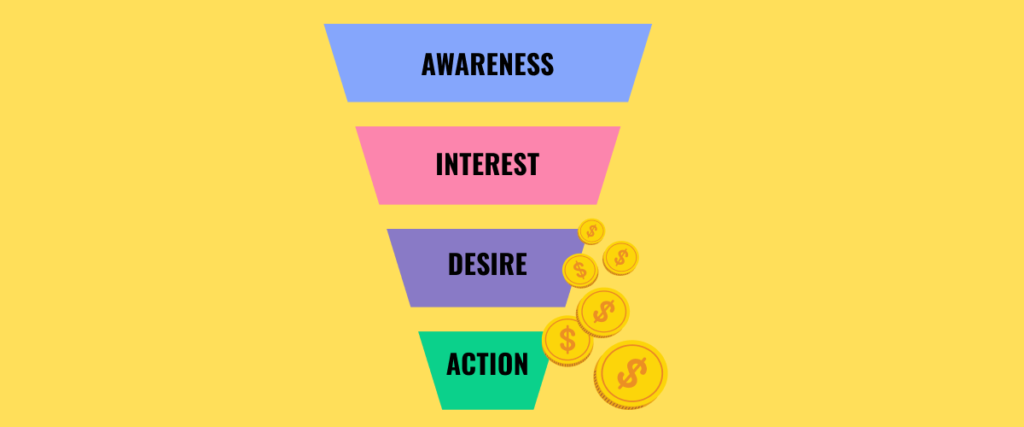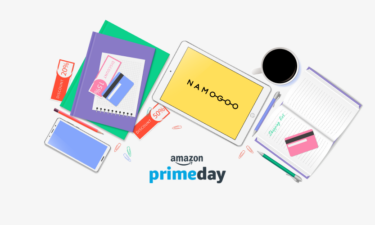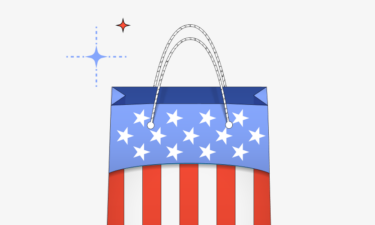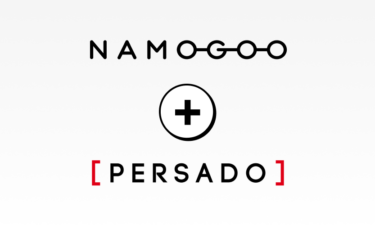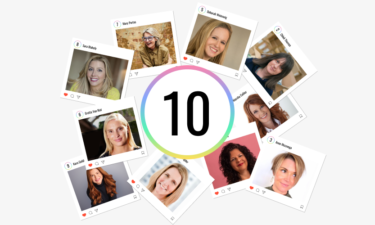Bonus Material: Why Shoppers Abandon Their Carts – 17 Reasons [Ebook]
In eCommerce, the conversion funnel is one of the most crucial elements to drive growth.
Get it right, and the sales will roll in. Get it wrong, and you could end up wasting thousands of dollars on campaigns that flop.
Understanding your conversion funnel makes it easier to spot:
- Where your most effective customers find your brand, so you can focus on those channels or campaigns.
- How you are losing prospects (often called leaks in the conversion funnel), so you can optimize your marketing and sales efforts.
- What optimization efforts are most likely to increase sales so you can focus your budget on cost-effective efforts.
This guide to conversion funnels will walk you through everything you need to know, including:
What Is A Conversion Funnel?
Stages of a Conversion Funnel
Conversion Funnel Examples
What Conversion Funnel Metrics Should I Track?
How To Optimize Your Conversion Funnel To Drive Sales
Go Forth & Optimize Your Conversion Funnel
If your sales and marketing efforts aren’t producing the results you hoped for, the issue might be your conversion funnel.
What Is A Conversion Funnel?
A conversion funnel is a marketing term describing the different stages of the buyer’s journey, from first discovering a brand to making a purchase.
The “funnel” is wider at the top and becomes narrow at the bottom as users filter through each step of the funnel.
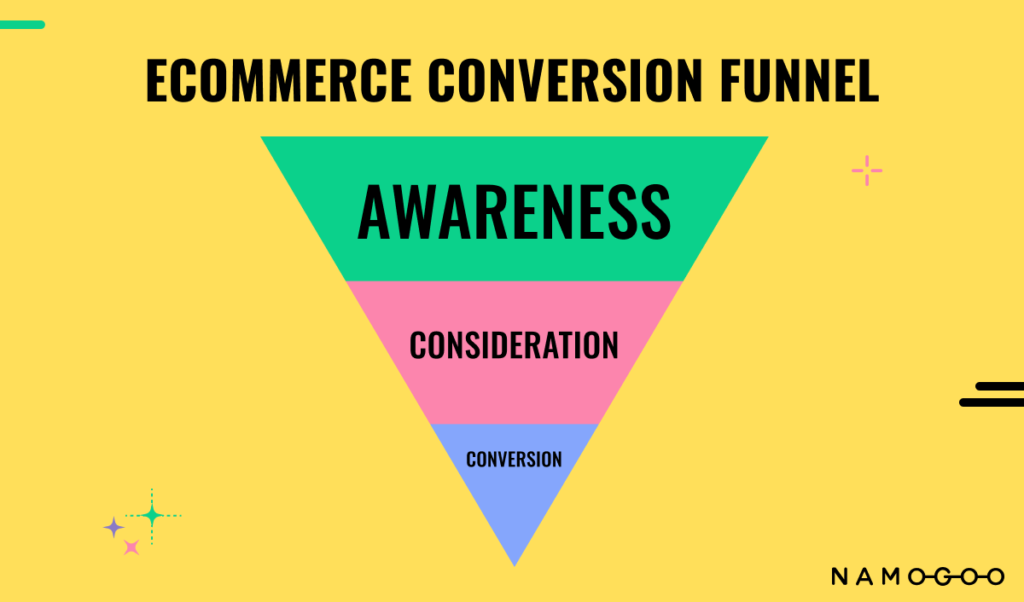
Conversion funnels are typically divided into three sections: top, middle, and bottom of the funnel. (These funnel sections might also be called upper, middle, and lower.)
These terms refer to how close a user is to making a purchase and, more importantly to your business, which marketing or sales efforts are most effective.
- Top of the funnel: This is the widest part of the conversion funnel and has the largest pool of prospects. A user realizes they have a problem and begins researching solutions. They might be looking for information, FAQs, and other high-level educational materials. For example, a parent might enroll their pre-teen child in basketball and need to purchase sneakers to equip them for success. So they may begin to research to find the best basketball shoes for new middle-school players that won’t break the bank if their child decides she no longer wants to play.
- Middle of the funnel: Prospects have zeroed in on the companies that offer what they’re looking for and are comparing their options. They begin eliminating options that don’t solve their problem, aren’t a good value, or they don’t connect with.
- Bottom of the funnel: The narrowest part of the funnel. At this point, users have decided which brands they prefer and begin comparing reviews and pricing and looking for social proof. They are very close to making a final decision.
Your funnel strategy addresses how you will move those in your target market through the different stages of the funnel.
Stages of a Conversion Funnel
The stages of a conversion funnel are typically broken down into four ‘stages’ of buyer behavior. As consumers move through each stage, they get closer to the final purpose of a conversion funnel: making a purchase.
Understanding each of the stages is critical to building an optimized funnel and helping build interest and brand awareness. Each step should build on the previous stage.
- Awareness: The first step in the conversion funnel, designed to pull users into your funnel. Work on increasing brand awareness and driving high-quality traffic to your website. Common marketing strategies include posting on social media, creating content marketing assets like blogs, and optimizing to increase organic search rankings.
- Interest: Users are aware of your brand, but aren’t ready to buy or even convinced they need to make a purchase. Work to build trust by offering interesting content, freebies, or email sign-ups. This stage aims to move the most qualified leads (those in your target audience) to the next stage in the funnel. Common marketing assets include case studies, prospecting ads, and influencer campaigns.
- Desire: Users know about your brand, understand the value you offer, and want to learn more. Focus on value, education, and continuing to build trust. Common marketing strategies include featuring user-generated content (UGC) on social media, email drip campaigns, promoting product reviews, and personalized recommendations.
- Action: The final stage of the conversion funnel. Users know your brand, they are interested in what you offer and are ready to make a purchase. Your goal is to ensure they purchase from you, not a competitor. Marketing assets at this stage include retargeting ads, cart abandonment emails, and intent-based promotions.
Note that customers will enter your funnel at different stages; not all consumers enter at the awareness stage.
Conversion Funnel Examples
There is no one right way to build a conversion funnel — but there are plenty of wrong ways. Let’s look at a fictitious example so you can see how it might work in the real world:
- Drive traffic to a website via an SEO-optimized blog and social media. (Top of the funnel.)
- Publish high-value content that engages users and encourages them to sign up for the email list.
- Use email to educate users about their different options and focus on how your brand stands apart. (Middle of the funnel.)
- Send a coupon code to encourage email subscribers to purchase. (Bottom of the funnel.)
- Use exit-intent popups to keep users on-site and answer questions they might have before converting.
- Convert the visitor!
Keep in mind that most customers won’t move smoothly from one stage to the next. You’ll likely need to use several strategies in each stage of the funnel.
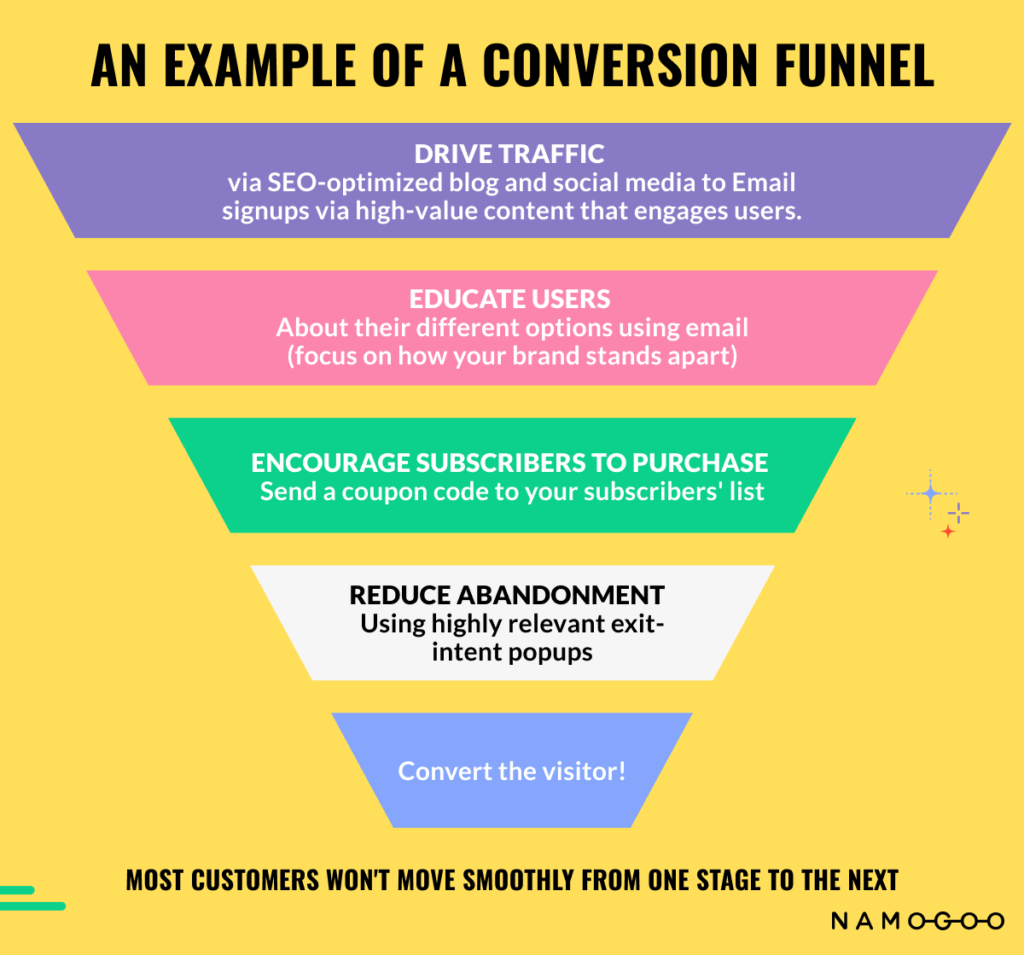
Let’s look at how Harry’s, an eCommerce company, moves customers from awareness to conversion.
Harry’s Conversion Funnel
Harry’s is an online shaving and hair care company aiming to disrupt the shaving industry by offering affordable, high-quality razors and hair care. They’ve been quite successful, too; the company boasts $350 million in annual sales[*].
- Top of the funnel: Harry’s top of the funnel campaigns include a robust social media strategy, online magazine Five O’Clock, and search engine optimization. For example, their site ranks well for “buy razors online.”

- Middle of the funnel: Once consumers know about the brand, the company works to convince them Harry’s is the right choice. This includes detailed product pages, focusing on their value proposition (it’s lower cost and made with integrity), and including social proof on their website.

- Bottom of the funnel: Once Harry’s has reeled traffic in, they keep them coming back with Core, a membership club, email marketing, and free shipping for customers who spend $10 or more.

What Conversion Funnel Metrics Should I Track?
In an ideal world, users would move smoothly through your conversion funnel from interest to conversion. Unfortunately, the conversion process is rarely that smooth. Users may bounce back and forth between different stages, drop off for weeks at a time, only to come back ready to convert.
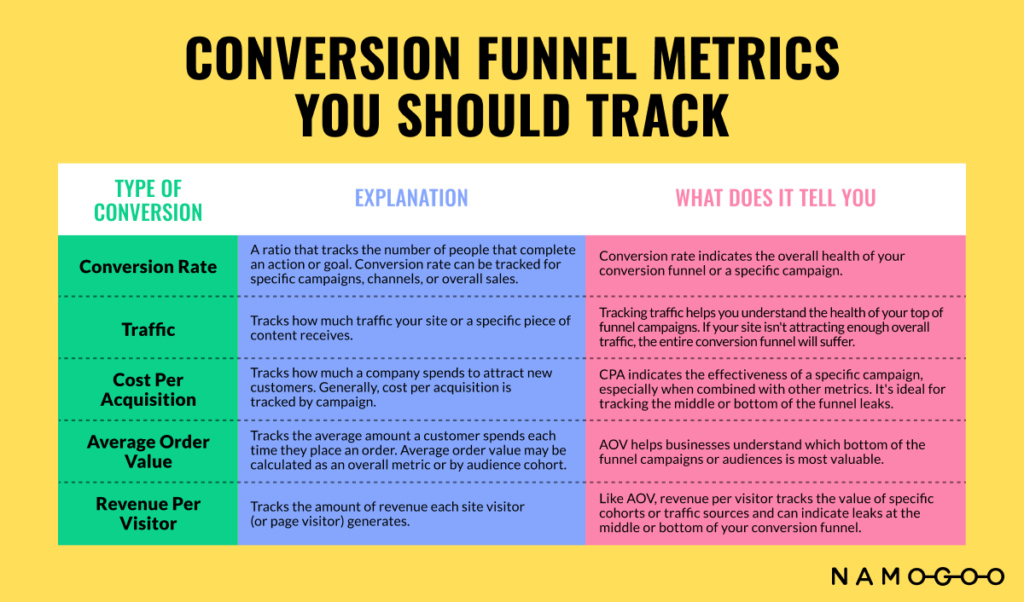
Here are several metrics that will help you spot leaks in each stage of your conversion funnel, so you know where to focus your optimization efforts.
Conversion Rate
Conversion rate is a ratio that tracks the number of people that complete an action or goal. Conversion rate can be tracked for specific campaigns, channels, or overall sales.
Use this formula to calculate the conversion rate:
Number of goals met (sales, clicks, visits, etc.) / total visitors X 100
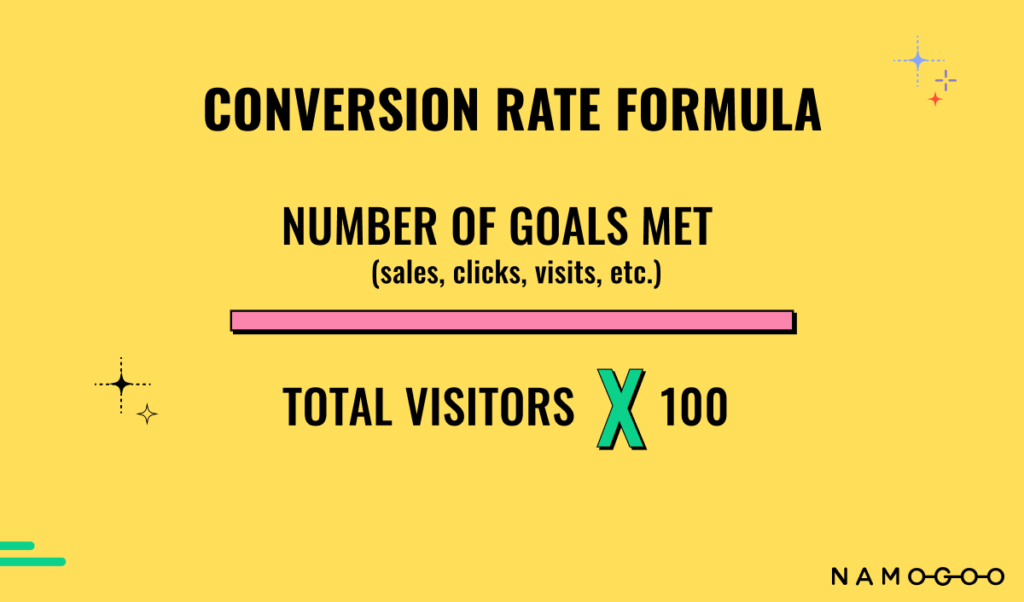
For example, if a landing page earns 15 conversions out of 1,000 visitors, your conversion rate is 1.5 percent.
Other conversions to track might include site visitors versus email sign-ups, email newsletter versus sales, or the number of impressions an ad earns versus sales from the campaign. You might also track the conversion rate between desktop versus mobile customers.
What conversion rate tells you:
Conversion rate indicates the overall health of your conversion funnel or a specific campaign. Conversion rates can vary drastically by goal and industry, but a conversion rate over 2 percent is generally considered good.
Traffic
Traffic metrics can be accessed in an analytics platform, such as Google Analytics. It tracks how much traffic your site or a specific piece of content receives.
What traffic tells you
Tracking traffic helps you understand the health of your top of funnel campaigns. If your site isn’t attracting enough overall traffic, the entire conversion funnel will suffer.
Cost Per Acquisition
Cost per acquisition tracks how much a company spends to attract new customers. Generally, cost per acquisition is tracked by campaign.
Use this formula to calculate cost per acquisition:
The total cost of the campaign/number of new customers earned
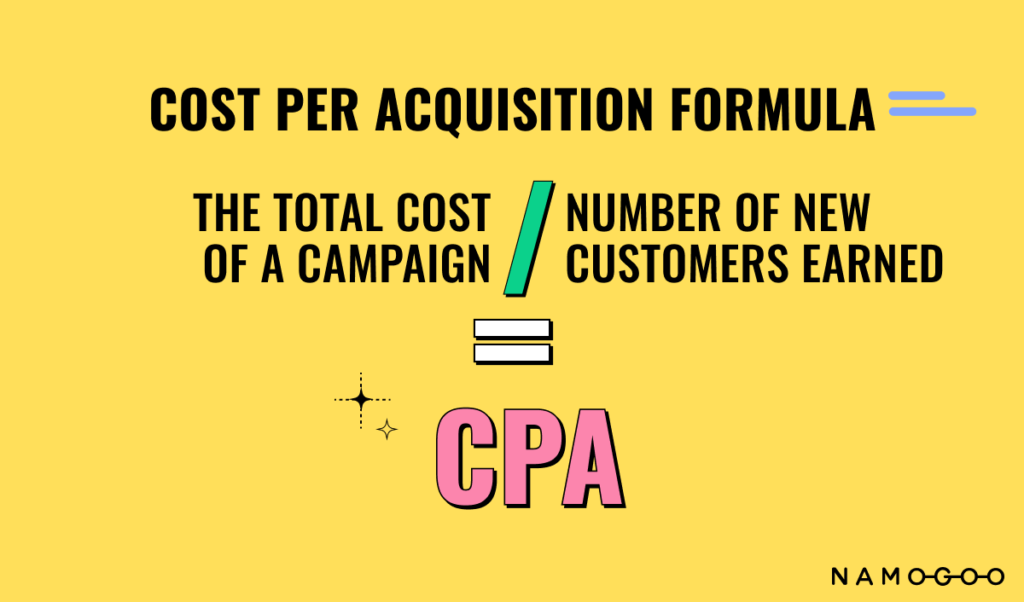
For example, if you spent $500 on Facebook ads and earned ten new customers, your cost per acquisition is $50.
What cost per acquisition tells you:
CPA indicates the effectiveness of a specific campaign, especially when combined with other metrics. It’s ideal for tracking the middle or bottom of the funnel leaks.
For example, if the CPA of Facebook ads is $50, and the CPA of an ebook is $10, you might assume ebooks are more effective.
However, if the AOV of a customer acquired through Facebook is $200, and the AOV of your customer acquired through your ebook is $20, then Facebook ads are actually more cost-effective. You would make $150 on every acquisition vs. $10.
Average Order Value
The average order value tracks the average amount a customer spends each time they place an order.
Use this formula to calculate the average order value:
Total revenue/number of orders

Average order value may be calculated as an overall metric or by audience cohort. For example, if total mobile sales are $25,000 with 250 orders, your average order value for mobile customers is $100. Comparing this to desktop users can help indicate issues with UX.
What average order value tells you
AOV helps businesses understand which bottom of the funnel campaigns or audiences is most valuable. Conversion rate alone only tells you if a customer converts, while AOV indicates the value of each segment or campaign.
Read More: Average Order Value: The Advanced Guide
Revenue Per Visitor
Revenue per visitor tracks the amount of revenue each site visitor (or page visitor) generates.
Here’s the formula for revenue per visitor:
Total visitors/total revenue
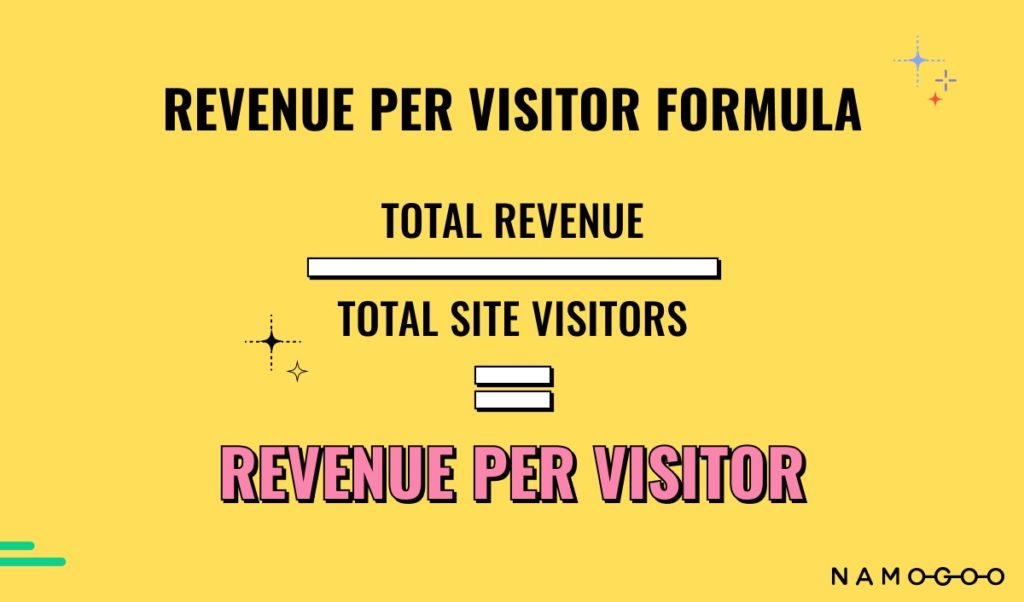
To increase accuracy, consider tracking unique visitors, not overall traffic. This eliminates data noise caused by multiple visits by the same user.
What revenue per visitor tells you
Like AOV, revenue per visitor tracks the value of specific cohorts or traffic sources and can indicate leaks at the middle or bottom of your conversion funnel. For example, you might find that revenue per visitor for customers coming from Facebook is much lower than users from your blog. This could indicate it’s time to revamp your social strategy.
Read More: Revenue Per Visitor: RPV Formula + How to Improve It
How To Optimize Your Conversion Funnel To Drive Sales
The first step in optimizing your conversion funnel is determining where you are losing traffic — which is why tracking metrics are crucial to conversion funnel success.
Once you’ve determined where you’re losing users in the funnel, you can begin to optimize to plug those leaks.
Optimize For The Top Of The Funnel
The goal at this stage is to draw in traffic and help users learn about your brand. Here are a few strategies to optimize your funnel at the top:
- Implement SEO best practices: Showing up in organic search is one of the best ways to draw in more traffic. Make sure your site loads quickly, optimize meta and title tags, and ensure your site is easy to navigate
- Produce long-form content: Well-written, in-depth content increases search rankings and educates customers. Blog posts, how-to guides, and industry news help people learn about your brand and build trust.
- Social media: The average person spends more than two hours a day on social media sites[*]. To optimize your funnel with social media, claim your profiles and publish content on a regular basis.
Optimize For The Middle Of The Funnel
Users know about your brand, but they are still exploring their options.
At this stage, your goal is to attract and keep more qualified traffic. Focus on quality over quantity.
Here are a few ways to optimize the middle of your conversion funnel.
- A/B test landing pages: If traffic is getting to your landing page but not converting, it’s time to launch A/B tests. Test features such as headings, the offer, benefit placement, and use of white space.
- Optimize product pages: Make sure your product pages focus on benefits and clearly explain what the item does. Social proof and better images may also help.
- Create content for long-tail key terms: Long-tail key terms receive less traffic but tend to attract users further in the funnel. Look for questions your users have and create content that targets those terms.
- Create and test email campaigns: Use email to build a stronger relationship and create a sense of urgency. Focus on communicating brand value. Use A/B testing to optimize your campaign and segmentation to send more relevant offers.
Optimize For The Bottom Of The Funnel
Users know your brand, they know they need a solution, and they hope you can be the one to provide it. However, there are still plenty of chances for you to lose them at this point. Here are a few strategies to push users to take the final step.
- Exit-intent triggers: Use popups to offer more information, suggest other products, or ask what visitors are looking for. Make sure to test different triggers (such as time on page or number of pages visited) to see which are more effective.
- Test intent-based promotions: Intent-based promotions consider user behavior, making them far more effective than blanket offers. For example, you might see that one type of customer is more likely to convert with free shipping while another responds to a small discount.
- Recover abandoned carts with email offers: Even the most effective conversion funnels won’t convert every user. A cart reminder email can bring those customers back and drive conversions.
Go Forth & Optimize Your Conversion Funnel
Creating and optimizing your conversion funnel is one of the most effective strategies for driving eCommerce growth.
Focus on making incremental changes to see what strategies have the largest impact. Not only will you drive sales, but you’ll also build a dedicated, loyal customer base.



